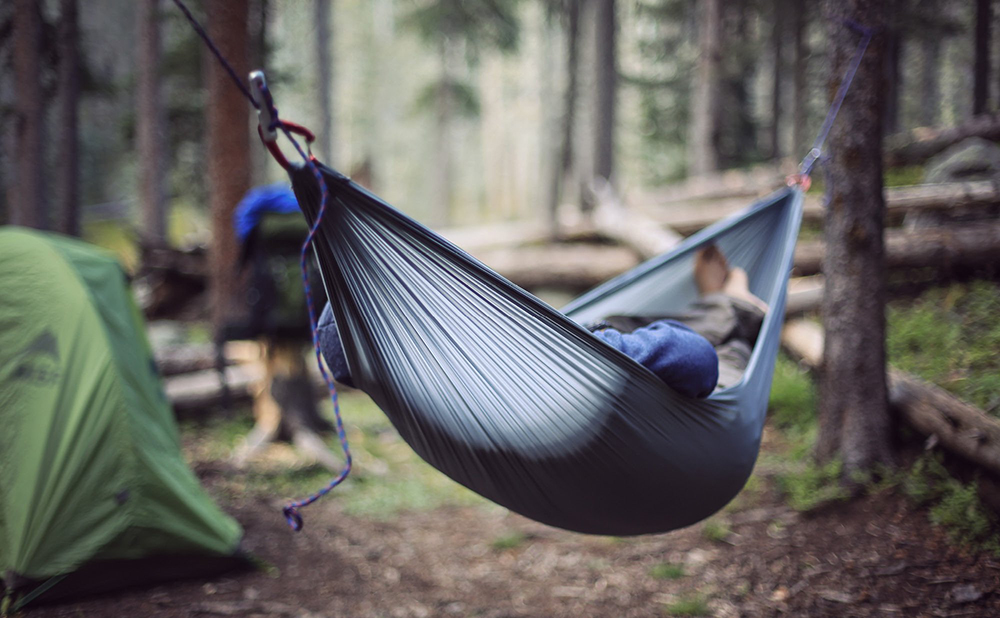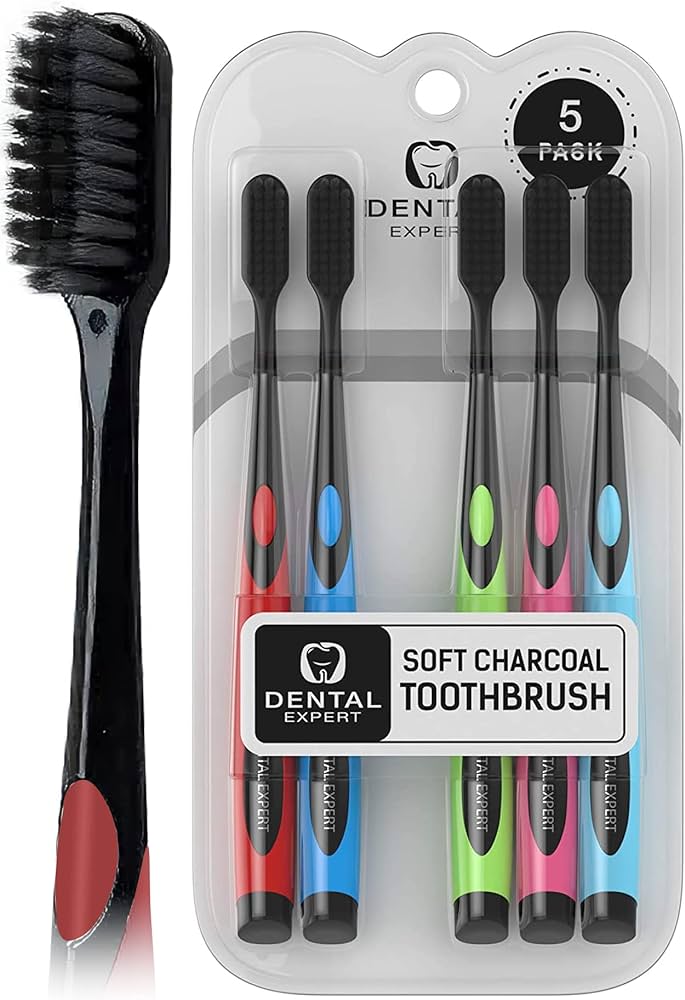- 8 Airplane Footrest Hammock!Travel comfortably - October 9, 2023
- top 7 Pool Float Water Hammock for a Relaxing Summer - October 9, 2023
- top 5 Space SaverSingle Hammock Stand Maximize Comfort and Space - October 9, 2023
To care for your hammock fabric, regularly clean it by gently hand washing with mild soap and water, then air-drying it thoroughly. Additionally, avoid exposing the fabric to harsh chemicals, prolonged sunlight, and moisture to maintain its durability and longevity.
If you own a hammock, you likely enjoy the relaxing sway it provides as you unwind outdoors. However, to ensure your hammock fabric remains in optimal condition, proper maintenance is crucial. Taking care of your hammock fabric involves simple yet important steps that will help extend its lifespan and guarantee continued comfort.
From cleaning techniques to protective measures, this guide will equip you with the knowledge to keep your hammock fabric looking and feeling great for years to come. So, let’s dive into the details of caring for your beloved hammock fabric without any delay.
Understanding The Fabric Of Your Hammock
Different Types of Hammock Fabric and Their Characteristics
When it comes to purchasing a hammock, understanding the fabric is crucial. The type of fabric used not only determines the durability and comfort of your hammock but also affects its overall performance. Here are some common types of hammock fabric and their characteristics:
| Hammock Fabric Type | Characteristics |
|---|---|
| Cotton | Cotton fabric offers a soft and breathable feel. It’s hypoallergenic and great for those with sensitive skin. However, cotton hammocks can be prone to mildew and may require more maintenance. |
| Polyester | Polyester fabric is known for its strength and resistance to fading or stretching. It is also quick-drying and resistant to mildew, making it a low-maintenance option. |
| Nylon | Nylon fabric is lightweight, highly durable, and resistant to mildew. It’s perfect for outdoor enthusiasts, as it dries quickly and can withstand different weather conditions. |
Choosing the Right Fabric for Your Specific Needs
When choosing the fabric for your hammock, it’s important to consider your specific needs. Think about where you’ll be using the hammock, the climate of your area, and your personal preferences. Here are some factors to consider:
- The intended usage: Will you be using the hammock primarily indoors or outdoors?
- The climate: Do you live in a humid environment or an area with frequent rain?
- The level of maintenance: Are you willing to invest time in regular fabric care or prefer a low-maintenance option?
- Your personal comfort: Do you prefer a soft and breathable fabric or something more durable and weather-resistant?
Factors to Consider When Selecting Hammock Fabric
When selecting hammock fabric, it’s essential to take various factors into account:
- Durability: Consider the strength and longevity of the fabric to ensure it can withstand regular use and any potential wear and tear.
- Maintenance: Determine how much time and effort you’re willing to invest in caring for the fabric.
- Comfort: Choose a fabric that provides the level of comfort you desire, whether it’s a soft feel or a cool and breathable texture.
- Weave Type: Different fabric weaves, such as canvas or mesh, offer unique benefits, so consider the specific advantages of each before making a decision.
By carefully considering all these factors, you can choose the perfect hammock fabric that suits your needs, providing both comfort and durability.
Cleaning And Maintenance Tips For Your Hammock Fabric
Proper cleaning and maintenance are essential to ensure the longevity and comfort of your hammock fabric. Whether you have a cotton, polyester, or nylon hammock fabric, caring for it in the right way can make a significant difference in its lifespan. In this section, we will discuss the recommended cleaning methods for different types of hammock fabric, how often you should clean your hammock fabric, and how to store it properly when not in use.
Recommended cleaning methods for different types of hammock fabric
The cleaning method for your hammock fabric depends on the material it is made of. Let’s take a look at the recommended cleaning methods for different types of hammock fabric:
| Hammock Fabric Type | Recommended Cleaning Method |
|---|---|
| Cotton | Hand wash with mild detergent and warm water. Avoid using bleach or harsh chemicals. |
| Polyester | Machine wash on a gentle cycle with cold water. Use a mild detergent and avoid using fabric softeners. |
| Nylon | Hand wash with mild detergent and cool water. Rinse thoroughly and air dry. |
How often should you clean your hammock fabric?
The frequency of cleaning your hammock fabric depends on various factors, including usage, exposure to dirt or debris, and weather conditions. As a general guideline, it is recommended to clean your hammock fabric at least once every season. However, if you notice any stains or buildup, it’s best to clean it promptly to prevent further damage.
Storing your hammock properly when not in use
When your hammock is not in use, proper storage is crucial to maintain its quality. Here are a few tips to store your hammock properly:
- Ensure your hammock is completely dry before storing it to prevent mildew or mold.
- Remove any metal parts, such as hooks or carabiners, if possible, to avoid rusting.
- Fold or roll your hammock neatly to avoid tangling or snags.
- Store your hammock in a cool, dry place away from direct sunlight to prevent fading or degradation of the fabric.
By following these cleaning and maintenance tips, you can keep your hammock fabric in excellent condition for years of relaxation and enjoyment. Remember to check the manufacturer’s guidelines for specific care instructions for your hammock fabric to ensure you maintain its warranty and quality.
Protecting Your Hammock Fabric From Damage
Taking proper care of your hammock fabric is essential in ensuring its longevity and durability. By protecting it from damage caused by harsh weather conditions, mold and mildew growth, you can enjoy the comfort of your hammock for years to come.
<h3>Avoiding exposure to harsh weather conditions</h3>
One of the primary ways to protect your hammock fabric is by avoiding exposure to harsh weather conditions. The fabric is susceptible to damage from prolonged exposure to sunlight, rain, and extreme temperatures. Here’s how you can shield it from these elements:
- Place your hammock in a shaded area, away from direct sunlight. Consider positioning it under a tree or using an umbrella or shade cloth to shield it from the sun’s harmful UV rays.
- During rainy seasons, bring your hammock indoors or store it in a dry area. If you plan to keep it outside, make sure it’s well-covered to prevent water from seeping into the fabric.
- Extreme temperatures can weaken the hammock fabric, so avoid leaving it outside in freezing or scorching conditions. If the weather becomes too hot or cold, bring it indoors until the temperature stabilizes.
<h3>Using a hammock cover or tarp to protect the fabric</h3>
To provide an extra layer of protection for your hammock fabric, you can use a specifically designed cover or tarp. These covers are waterproof and often made from durable materials that can withstand harsh weather conditions. Here are some key tips to keep in mind:
- Choose a cover that fits your hammock snugly. A well-fitted cover is less likely to let in water or allow dirt and debris to accumulate on the fabric.
- Prioritize covers made from quality materials such as polyester or nylon, as they are more resistant to tearing and UV damage.
- When not using your hammock, always cover it with the protective tarp to shield it from rain, dust, and UV rays. This will significantly extend its lifespan.
<h3>Preventing mold and mildew growth on the fabric</h3>
Mold and mildew can ruin the fabric of your hammock and create an unpleasant smell. Taking preventive measures is crucial to avoid these issues. Here’s what you can do:
- Regularly clean your hammock fabric using mild soap and water. Gently scrub the surface with a soft brush or sponge to remove any dirt or debris that can promote mold or mildew growth.
- Ensure your hammock is completely dry before storing it away. Moisture trapped in the fabric can create a conducive environment for mold and mildew to thrive.
- If your hammock does get wet, hang it in a well-ventilated area to air dry. Avoid folding or storing it until it is completely dry.
- In humid climates, consider using a dehumidifier in the storage area to reduce moisture levels, preventing mold and mildew from forming.
By following these simple tips, you can protect your hammock fabric from damage caused by harsh weather conditions, mold, and mildew growth, ensuring its longevity and enhancing your overall relaxation experience.
Repairing And Restoring Your Hammock Fabric
As much as we adore our hammocks and bask in their comforting sway, wear and tear are inevitable. When it comes to maintaining our beloved hammocks, knowing how to repair and restore the fabric is essential. Whether you’re dealing with small tears or holes or trying to revive faded or discolored fabric, we’ve got you covered. Identifying common fabric issues and damages, as well as understanding the steps to repair and restore your hammock fabric, will ensure years of uninterrupted relaxation.
Identifying common fabric issues and damages
Before diving into the repair process, it’s crucial to identify the fabric issues and damages your hammock may be facing. This allows for a targeted and effective repair strategy. Here are some common fabric issues and damages you may encounter:
| Issue or Damage | Description |
|---|---|
| Tears or Holes | Small or large tears, punctures, or holes in the fabric. |
| Fading or Discoloration | Loss of color intensity or uneven discoloration due to sun exposure or weathering. |
| Mold or Mildew | Growth of mold or mildew, often caused by moisture and lack of proper cleaning. |
| Fraying Edges | Unraveled or frayed edges that may require reinforcing or trimming. |
Steps to repair small tears or holes in the fabric
If you spot small tears or holes in your hammock fabric, don’t panic. Repairing them is easier than you might think. Follow these simple steps to restore your hammock fabric:
- Clean the damaged area by gently brushing away any dirt or debris.
- Trim any loose threads or fraying edges using sharp scissors, ensuring a neat edge.
- Apply a fabric adhesive or patch material matching the color and fabric type of your hammock.
- Securely attach the patch or adhesive to the damaged area, following the product instructions.
- Press down firmly to ensure proper adhesion and allow the adhesive or patch to cure completely.
- Inspect the repaired area and test its durability by gently tugging on the repaired fabric.
Restoring faded or discolored fabric
Over time, exposure to the elements can cause your hammock fabric to fade or develop unsightly discoloration. Here’s how you can bring back its vibrant appearance:
- Start by thoroughly cleaning your hammock fabric using a mild detergent and warm water.
- Rinse the fabric and allow it to dry completely in a shaded area to prevent further sun damage.
- Apply a fabric-safe dye or color enhancer, following the manufacturer’s instructions.
- Evenly distribute the dye or color enhancer on the fabric, ensuring thorough coverage.
- Allow the product to penetrate the fabric and set according to the recommended timeframe.
- Rinse the fabric again to remove any excess dye or color enhancer.
- Dry the fabric completely before reinstalling it on your hammock.
By identifying common fabric issues, tackling small tears or holes with a repair process, and restoring faded or discolored fabric, you can extend the lifespan of your hammock and continue enjoying moments of relaxation in your favorite outdoor spot. Keep in mind that proper care and maintenance are key to preserving the beauty and functionality of your hammock fabric.
Enhancing Comfort And Longevity Of Your Hammock Fabric
When it comes to enjoying the great outdoors, there’s nothing quite like lounging in a comfortable hammock. Whether you’re napping under the shade of a tree or soaking up the sun on a sandy beach, your hammock fabric is the key to ultimate relaxation. In order to ensure you get the most out of your hammock and keep it in top condition for years to come, it’s important to know how to care for it properly. By using the right accessories, adjusting the tension correctly, and following a few simple tips, you can enhance both the comfort and longevity of your hammock fabric.
Using proper accessories for added comfort and protection
Accessorizing your hammock with the right items not only enhances comfort but also protects the fabric from excessive wear and tear. Here are a few accessories to consider:
- Pillows: Adding a pillow to your hammock provides extra support for your neck and head, making your lounging experience even more comfortable.
- Mosquito net: Protect yourself from annoying bugs and insects by using a mosquito net that fits your hammock. This not only ensures a peaceful time outdoors but also prevents potential damage from bug bites.
- Waterproof cover: If you plan to leave your hammock outside for an extended period, investing in a waterproof cover can shield it from rain and UV rays, preventing fading and deterioration.
How to properly adjust the tension of your hammock fabric
Getting the tension right in your hammock fabric is crucial for both comfort and safety. Follow these simple steps to ensure proper adjustment:
- Select optimal suspension points: Look for sturdy trees or posts that can support your weight and provide a safe and secure setup for your hammock.
- Hang your hammock: Attach the hammock to the suspension points using appropriate straps or ropes. Ensure the fabric hangs at a comfortable height, with a slight sag in the middle for optimal support.
- Test the tension: Carefully sit in the hammock while paying attention to the fabric’s tension. Adjust the straps or ropes as needed to achieve a comfortable and well-balanced position.
- Regularly inspect and readjust: Over time, the tension in your hammock fabric may loosen due to use and weather conditions. Check the tension regularly and make any necessary adjustments to ensure a comfortable and safe experience.
Tips for prolonging the lifespan of your hammock fabric
By following these tips, you can maximize the lifespan of your hammock fabric:
- Store it indoors: When not in use, bring your hammock indoors to protect it from harsh weather conditions and excessive sun exposure.
- Keep it clean: Regularly clean your hammock fabric to remove dirt, debris, and stains. Follow the manufacturer’s cleaning instructions to prevent damage.
- Avoid sharp objects: Be mindful of sharp objects like zippers or jewelry that can snag or puncture the fabric. Take caution to prevent unnecessary damage.
- Don’t exceed weight limits: Each hammock has a weight limit specified by the manufacturer. It’s important to adhere to this limit to prevent strain and potential fabric tearing.
By using the right accessories, adjusting the tension correctly, and following these simple tips, you can ensure that your hammock fabric remains comfortable and sturdy for many relaxing moments to come.

Credit: scoutingmagazine.org
Ensuring Safety When Using Your Hammock
Hammocks are designed for relaxation and comfort, but it’s important to ensure your safety when using one. By following a few simple guidelines, you can enjoy your hammock knowing you’ve taken the necessary precautions. In this section, we will discuss the weight capacity and load limits for different fabric types, securing your hammock properly, and regularly inspecting it for wear and tear.
Weight Capacity and Load Limits for Different Fabric Types
When it comes to using a hammock, it’s important to consider the weight capacity and load limits of the fabric. Each fabric type has its own maximum weight capacity, and exceeding this limit can compromise your safety. Here are some common fabric types used in hammocks and their weight capacity:
| Fabric Type | Weight Capacity |
|---|---|
| Nylon | Up to 400 pounds |
| Polyester | Up to 450 pounds |
| Cotton | Up to 300 pounds |
It’s essential to check the weight capacity of your hammock fabric and avoid exceeding it to prevent accidents or damaging the hammock. Choosing a fabric with a higher weight capacity than your own weight is always a safe choice.
Securing Your Hammock Properly to Avoid Accidents
Properly securing your hammock is crucial to avoid accidents and injuries. When setting up your hammock, ensure you have strong and reliable support points. This can be sturdy trees, hammock stands, or secure anchors specifically designed for hammock use. Avoid attaching your hammock to weak or unstable structures that could potentially break or collapse.
Use strong ropes or straps and double-check their integrity before use. Ensure each attachment point is securely fastened and can hold the weight of the hammock and the person using it. Taking the time to secure your hammock properly will provide peace of mind as you relax and sway gently in the breeze.
Regularly Inspecting Your Hammock for Wear and Tear
Maintaining and inspecting your hammock regularly is essential to ensure its safety and longevity. Over time, hammock fabric may become worn or frayed, compromising its structural integrity. Therefore, it’s essential to inspect your hammock for any signs of wear and tear.
- Check for any loose stitching or tears in the fabric.
- Inspect the ropes or straps for any fraying or signs of weakness.
- Look for any signs of mold or mildew, especially in humid or damp environments.
If you notice any damage or signs of wear, it’s important to repair or replace the affected part promptly. This will help prevent accidents and ensure that you can continue enjoying your hammock to the fullest.
By adhering to weight capacity guidelines, securing your hammock properly, and regularly inspecting it for wear and tear, you can ensure the safety of yourself and others while enjoying the blissful relaxation that hammocks offer.
Frequently Asked Questions On How Do I Care For My Hammock Fabric
How Often Should I Clean My Hammock Fabric?
To keep your hammock fabric in good condition, it is recommended to clean it at least once a month.
Can I Machine Wash My Hammock Fabric?
Yes, you can. It is safe to machine wash your hammock fabric on a gentle cycle using mild detergent.
How Do I Remove Stains From My Hammock Fabric?
To remove stains from your hammock fabric, mix a solution of water and mild soap, gently scrub the stain, and rinse with clean water.
Can I Leave My Hammock Fabric Outside During Rain?
Although some hammock fabrics are weather-resistant, it is best to bring your hammock indoors during heavy rain to prevent damage.
How Do I Store My Hammock Fabric During Winter?
Store your hammock fabric in a dry, well-ventilated place during winter to protect it from moisture and potential damage.
Can I Repair Tears In My Hammock Fabric?
Yes, small tears can be repaired using a patch kit specifically designed for hammock fabric. Follow the instructions provided with the kit for best results.
Conclusion
Taking proper care of your hammock fabric is essential to ensure its longevity and optimal performance. By following the recommended cleaning and maintenance guidelines, such as avoiding harsh chemicals and storing it in a dry place, you can enjoy years of relaxation in your hammock.
Remember, regular inspections and repairs can also help prevent any damage from escalating. With these simple steps, you can keep your hammock fabric in top-notch condition and continue to enjoy the ultimate comfort it provides.







